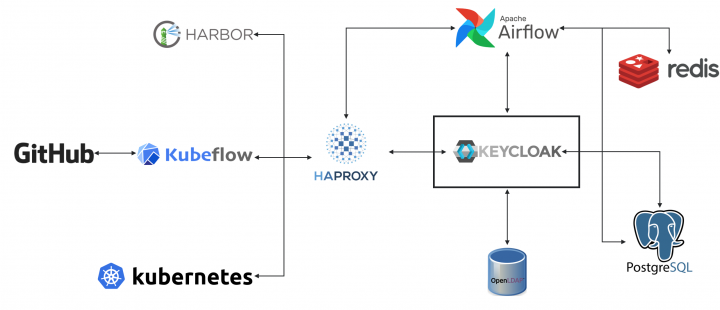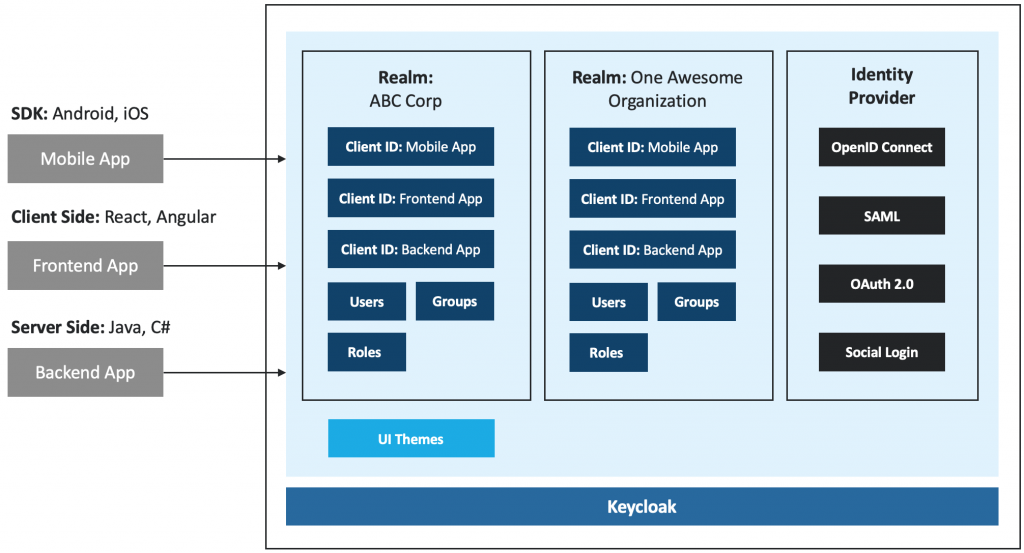Introduction
Keycloak is an open-source software solution that offers single sign-on (SSO) features and identity management. It is developed by Red Hat and licensed under the Apache License, version 2.0 for web applications and services.
With Keycloak, users can authenticate with a single set of credentials to access multiple applications and services without having to log in separately with each one. OAuth 2.0, OpenID Connect, and SAML 2.0 are just a few of the many authentication methods and technologies that it supports.
Additional identity and access management (IAM) capabilities provided by Keycloak include user registration and self-service, multi-factor authentication (MFA), user federation, and granular access control.
Why do Business Applications need Keycloak?
Keycloak is a useful tool for business applications, as it offers crucial components like user authentication and authorization, single sign-on (SSO) capabilities, identity federation with outside providers, fine-grained access control, security features, developer-friendly integration options, and centralized administration. Using Keycloak, businesses can protect their apps, allow users to log in only once for different services, integrate with user directories, enforce granular access controls, improve security, speed up development, and make administrative jobs easier.

It provides security measures to shield applications from possible risks, such as token management and revocation. It also offers a centralized administration portal for managing users, roles, and permissions across several apps.
Implementation of Keycloak

Here are the steps to implement Keycloak,
- Download Keycloak – First, download the Keycloak server from the official website
- Install and run Keycloak – After downloading the Keycloak server, you can install it by extracting the downloaded file and running the start script
- Create a new realm – Once Keycloak runs, you can create a new realm. A realm is a container for a group of users, credentials, and authentication methods. The “Add Realm” button can be used to create a new realm
- Create a client – After setting up a realm, you can create a client. A client is a graphical representation of a web application or service that requires Keycloak user authentication. You can create a client by clicking on the “Clients” page and then clicking on the “Create” button
- Setting up the client – You can set up the client after making the client. You can set the client up to use a certain authentication flow, define the permitted redirect URIs, and describe which responsibilities and permissions are necessary to access particular resources
- Setup user authentication – The final step is to set up user authentication. For example, you can define the authentication procedures that users must go through to log in, set up multi-factor authentication, and establish social login providers
- Check your setup – Finally, you can check whether the authentication and authorization processes are functioning properly or not by logging into the client application and testing the Keycloak setup
Advantages
- Centralized and Robust User Authentication and Authorization – Business applications benefit from secure user authentication and authorization provided by Keycloak. It supports several authentication protocols, such as OpenID Connect and OAuth 2.0, making user authentication simple and safe
- Single Sign-On (SSO) Simplifies User Experience – Users may use a single set of credentials to sign in to all their applications and services. This eliminates the need for users to remember multiple usernames and passwords
- Multi-Factor Authentication – Multi-factor authentication (MFA) adds an extra layer of security to the authentication process with biometric authentication, one-time passwords, and more
- User Management – It offers a system for managing users, groups, and roles that enables administrators to do so across a variety of applications and services to manage user access and permissions
- Open Source and Customizable – Keycloak is an open-source project, making it available for usage, modification, and distribution without charge and modifying the user interface
- Seamless Integration with External Identity Providers – Business organizations may link with external identity providers like LDAP or Active Directory; thanks to Keycloak’s support for identity federation. Keycloak eliminates the need for duplicate user administration by using existing user directories to offer seamless authentication and access control across apps
- Fine-Grained Access Control – Keycloak enables fine-grained access control, allowing businesses to define specific roles, permissions, and access policies for users, ensuring appropriate access based on their roles and responsibilities
Conclusion
Businesses looking to improve security, user experience, and administrative effectiveness for their applications will find Keycloak’s wide range of capabilities and features of great value. Keycloak provides a safe and practical solution, from authentication and access control to seamless interaction with other identity suppliers. Businesses can concentrate on their main activities using Keycloak since it successfully manages user identities and protects apps.





